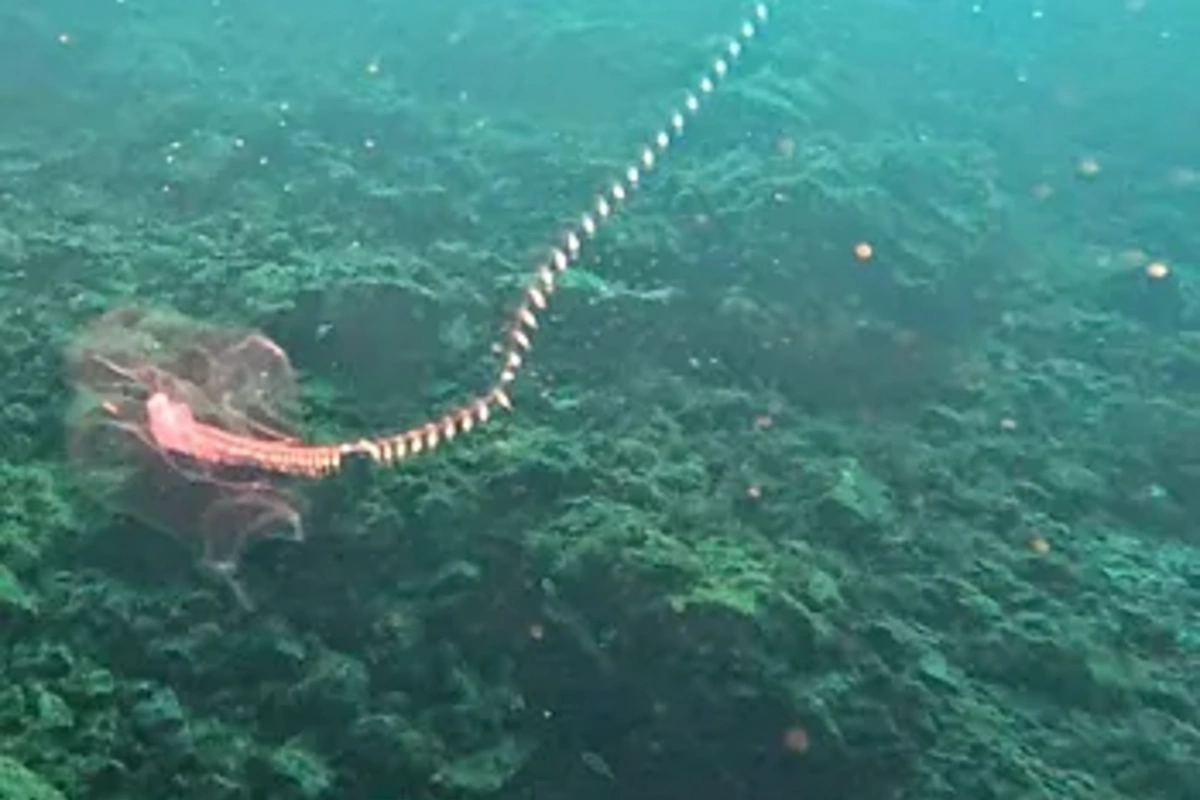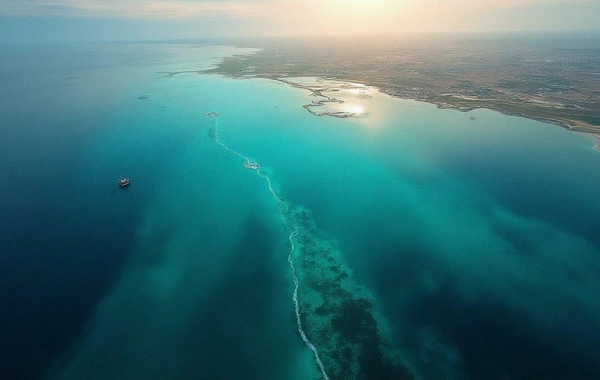A 50-meter predator with dangerous venom spotted near European shores

Marine biologist Alan Deydan witnessed an amazing phenomenon off the coast of Malta - he managed to capture a giant siphonophore of the species Praya dubia. Information about this unique find was published by the Lovin Malta portal.
According to the researcher, the rare marine creature was photographed at a depth of about 25 meters. Praya dubia is considered one of the most impressive living organisms on the planet - individual specimens reach 50 meters in length, second in size only to the marine worms Lineus longissimus, which can extend up to 60 meters. It is important to note that the poison produced by siphonophores for hunting poses a potential danger not only to marine inhabitants but also to humans.
Praya dubia attracts attention not only for its size but also for its hunting strategies. It is an active swimmer that uses bright blue bioluminescent glow to attract prey. Upon discovering a food-rich area, the siphonophore stops and unfurls a network of tentacles covered with nematocysts - special cells that secrete a powerful toxin. Contact with them can paralyze or even kill the victim. The diet of this marine predator includes jellyfish-like marine creatures, small crustaceans, and presumably, fish fry and small fish.
The amazing feature of siphonophores lies in their structure - they are not a single organism but a complex colony of thousands of miniature specialized clones. During hunting, some clones inject poison into the victim, after which others absorb and digest the prey, distributing nutrients throughout the colony.
Earlier, another significant find was reported - the underwater vehicle of the Schmidt Institute of Oceanology recorded a siphonophore of the genus Apolemia off the coast of Australia. The official Twitter account of the institute noted: "It is quite likely that this is the largest specimen known to science".
Similar News
Media revealed who Trump considers the winner in the war in Ukraine
US President Donald Trump is confident that Russia's victory in the Ukrainian conflict is only a matter of time. This is reported by Politico with reference to...




 Azərbaycanca
Azərbaycanca  По-русски
По-русски  English
English 





